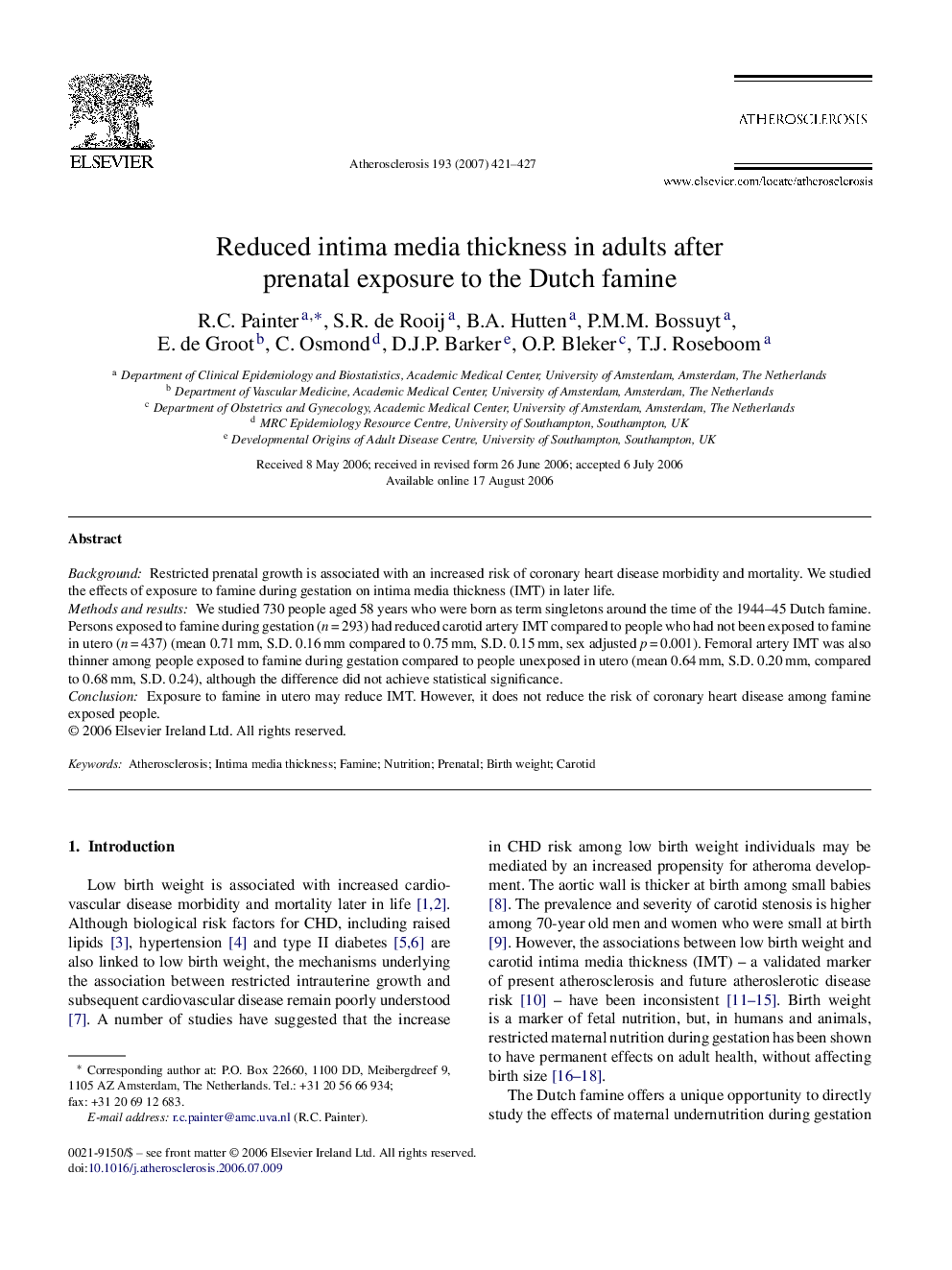| Article ID | Journal | Published Year | Pages | File Type |
|---|---|---|---|---|
| 2894367 | Atherosclerosis | 2007 | 7 Pages |
BackgroundRestricted prenatal growth is associated with an increased risk of coronary heart disease morbidity and mortality. We studied the effects of exposure to famine during gestation on intima media thickness (IMT) in later life.Methods and resultsWe studied 730 people aged 58 years who were born as term singletons around the time of the 1944–45 Dutch famine. Persons exposed to famine during gestation (n = 293) had reduced carotid artery IMT compared to people who had not been exposed to famine in utero (n = 437) (mean 0.71 mm, S.D. 0.16 mm compared to 0.75 mm, S.D. 0.15 mm, sex adjusted p = 0.001). Femoral artery IMT was also thinner among people exposed to famine during gestation compared to people unexposed in utero (mean 0.64 mm, S.D. 0.20 mm, compared to 0.68 mm, S.D. 0.24), although the difference did not achieve statistical significance.ConclusionExposure to famine in utero may reduce IMT. However, it does not reduce the risk of coronary heart disease among famine exposed people.
